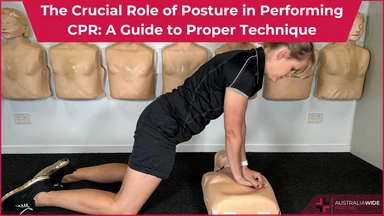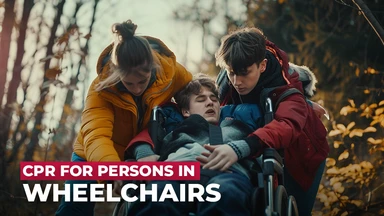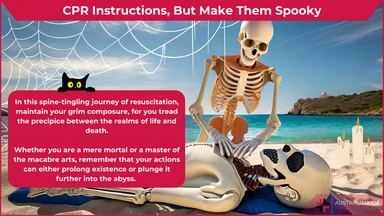What is CPR?


CPR is an acronym for cardiopulmonary resuscitation, the essential procedure used to provide first aid to a person whose heart has stopped beating.
CPR is a proven game-changer in medical emergencies. Despite its effectiveness, the technique itself is relatively simple. It involves locating the compression area on the casualty's chest and administering compressions.

Chest compression is integral to CPR. Compressions imitate the pumping of the heart. In the same manner, compressions will get blood circulating and deliver oxygen to the brain, at least until definitive treatment can restart the heart.
By delivering oxygenated blood to the brain, CPR compressions increase the chances of keeping the person alive. CPR is an immediate first aid response and is accompanied, where possible, by the use of an AED (automated external defibrillator). This would normally involve the first aider performing CPR without interruption, until an AED is found and retrieved by another person.
CPR and AED would be applied alternately and as directed by the AED.


Rescue breaths The CPR technique — as recommended by the Australian Resuscitation Council (ARC) and taught in first aid courses around Australia — traditionally involves 30 chest compressions interspersed by 2 breaths (mouth-to-mouth rescue breaths).
First aiders would aim to repeat this cycle until paramedics arrive to take over. Rescue breaths are no longer a requirement, especially with COVID-19 infection concerns. However, rescue breaths will help provide oxygen and can be carried out safely by first aiders who have appropriate PPE in the form of face-shields.
Learning CPR is best done by taking a CPR course with a Registered Training Organisation, such as those you’ll see here on the Australia Wide First Aid website.
Hollywood portrayals of CPR are invariably fictionalised, as are the sequences of actors up to their necks in water, thrashing around in near-drowning scenes.
To learn more about the reality of cardiopulmonary resuscitation, please see our article How to learn CPR.
In oxygen-deprivation emergencies and cardiac arrests, CPR will buy time for the casualty until the medical professionals arrive.
Near-drowning, heart attack, and drug overdose are the more common instances of this type of emergency where the heart has stopped along with breathing. CPR helps avert tragedy by ensuring the patient receives life-giving oxygen until hospital treatment becomes available.
Situations like this are confronting. If you are at the scene, calling 000 is a must.
If you are trained in CPR, you can do more. You could take action and perhaps help save a life.
In a sudden cardiac arrest episode, the first 5 minutes are critical. CPR is of vital importance to give the person the best chance of survival. Those chances of survival diminish rapidly. Death can result in as little as 10 minutes.
Please see our article on Sudden Cardiac Arrest First Aid.

And if you want to upgrade your CPR knowledge - Our Pocket Mask Training online course gives you the knowledge you need to be able to effectively us a pocket mask or face shield during CPR. Being fully online means you can work through it at your own place, either at your desk at work or in the comfort of your own home. Read the texts, watch the videos, and answer the quiz questions - it's as easy as that! You'll also receive a Certificate of Completion at the end of the course - perfect to hand to your employer or put on your resume.

April 12, 2024
Cardiopulmonary resuscitation (CPR) is a critical lifesaving skill that can significantly improve the chances of survival for individuals experiencing cardiac arrest. While many people are trained in CPR techniques, the importance of proper posture during CPR cannot be overstated.

February 23, 2024
Despite its apparent simplicity, bystanders often delay providing CPR to people with special conditions such as those in wheelchairs. This delayed response may be due to a lack of knowledge on what to do in such situations or the perceived complexity of the procedure due to the casualty's condition. However, the CPR principle remains the same for all casualties, whether they are in wheelchairs or not.

November 1, 2023
In this spine-tingling journey of resuscitation, maintain your grim composure, for you tread the precipice between the realms of life and death. Whether you are a mere mortal or a master of the macabre arts, remember that your actions can either prolong existence or plunge it further into the abyss. Proceed with a sense of dread, for you stand at the precipice of despair.